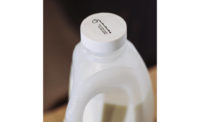Packaging plays a crucial role in consumers’ interactions with their food—it is the first thing customers see and touch as they decide which items to put in their shopping cart. Of course, it’s the product underneath that matters most and what keeps shoppers coming back. But, beyond taste and quality, modern consumers are also looking for a product that meets their expectations for both sustainability and value. In our industry, food packaging must continue to protect the safety and integrity of products while adapting to help retailers and producers meet evolving consumer desires.
Reflecting consumer desires
Packaging, like the food it protects and showcases, often reflects larger trends in consumer behavior and preference. For example, during the economic downturn in 2008, grocery retailers saw more customers headed to the store for pre-packaged or prepared deli selections rather than going out to dinner at restaurants. This thrifty swap meant that consumers were looking for high-quality, ready-to-eat or easy-to-prepare foods to take the place of restaurant meals. Packaging innovations both in-store and behind the deli counter had to evolve to meet these emerging consumer desires. Easy-to-open packaging for refrigerated foods and fresh solutions for deli counter items helped retailers and producers deliver the products and experiences consumers wanted.
Similarly, as today’s consumers place an increasing priority on organic and healthy options outside of the produce aisle, the frozen foods section has expanded to offer an array of fresh, organic and “clean label” choices. Shoppers seeking healthy choices expect transparency and educational labels for the food they’re purchasing, and packaging options must adapt to reflect that transparency, include in-depth product information and deliver a high level of freshness, even in the frozen food section. Of course, price is still a key consideration for consumers, but innovative packaging solutions offer brands and retailers the possibility for increased engagement and education, as consumers become more proactive and engaged around making healthy and sustainable purchases.
Safety and product integrity remain a constant top priority, but the opportunity for brand building and consumer engagement—especially in an ever-changing marketplace—represents an important consideration for continued innovation.
Increasing sustainability through smart solutions
Another important consideration for today’s consumers is sustainability. Eight out of 10 say they would feel more positive about stores or brands that try to reduce food waste, according to a 2014 Harris poll titled “Americans More Worried About Food Waste Than Air Pollution.” This concern is especially important at a time when food waste is the largest contributor to landfills. Meat represents one of the largest opportunities for increased efficiency and reduced waste, as currently 22% of meat is thrown away each year.
Tackling sustainability concerns for fresh red meat and poultry starts at the very beginning of the production process. For processors, innovative packaging solutions can reduce waste by generating less scrap material, increasing processing speeds and productivity and reducing utility costs. Smart solutions can even create cost savings during transportation by decreasing bulky packaging and requiring fewer truckloads for delivery.
For retailers, fresh red meat and poultry products can be a threat to profit margins—their short shelf life can lead to in-store waste and profit loss when they have to be marked down or thrown away due to expiration dates. By more effectively preserving products in the store, smart packaging can reduce shrink and increase shelf life—cutting down on overall food waste and boosting earnings. Further, addressing this issue represents an opportunity to not only improve operational efficiency, but can also help producers and retailers build brand loyalty with engaged consumers.
It is important to note that despite sustainability concerns, many consumers don’t yet fully understand the role packaging plays in the fight against food waste. While consumers see less packaging as a tenet of sustainability, they may not recognize the role played by smarter packaging. In fact, sometimes consumers inadvertently undermine both product freshness and sustainability by divvying up packages into smaller, single-serving portions. This not only wastes packaging (both the original material and the new, smaller re-pack) but often compromises the freshness of the food. Six in 10 consumers wish more food came in pre-packaged individually packed portions, according to the Harris Poll survey. Engineering packaging to include multiple size options and freezer-ready solutions can help address this demand. However, price and convenience are still king when it comes to consumer purchases in the supermarket aisle. While consumers are looking for products that help combat pollution and food waste and increase sustainability, they may not be willing to pay a premium or sacrifice convenience—meaning that sustainable packaging needs to be affordable too.
If processors and retailers can reduce waste along the entire chain through smarter packaging—by decreasing packaging scrap, retail shrink and even consumer re-packaging—they will be able to deliver efficiencies, sustainable solutions and cost savings.
Bringing it all together
Nothing brings people together like food. Brands and retailers realize they must offer products that reflect today’s consumer attitudes, and packaging must support that pursuit. Whether consumers are coming together over grab-and-go meals from the deli, cooking up fresh red meat and poultry or enjoying healthy frozen foods, smart packaging can help producers and retailers give customers the food experience they’re looking for—one that fits their budget, schedule and desire for sustainability.



